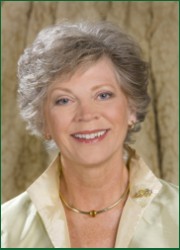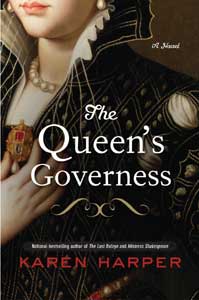



RSS: Blog FeedSubscribe to
Comments [Atom]
April 2007May 2007June 2007July 2007August 2007September 2007October 2007November 2007December 2007January 2008February 2008April 2008May 2008July 2008September 2008October 2008November 2008December 2008January 2009February 2009March 2009April 2009May 2009June 2009July 2009August 2009September 2009December 2009May 2010October 2010March 2011
History Buff is a site
for history lovers everywhere. It is also a site very interested in women
of the past. Although I (sadly) no longer have time to continue these interviews, here is an archive of Q&As about women's lives
in history. And please feel free to stop by History Buff's
sister site for archaeological discoveries making news today. Enjoy!

As an
historical fiction writer I am fascinated by news stories featuring the
past as it's unearthed and reimagined and brought to life. I spend a
large quantity of time searching for news in archaeology and history.
Once in a great while a new archaeological discovery will act as an inspiration
for what I'm currently writing. But most of the time the news stories
I read are simply interesting tidbits of history. Unfortunately, I have
disallowed comments because I travel so frequently that I can neither
monitor nor respond to them. But I would still love to share the history
that I find fascinating each day. So welcome! And feel free to visit my
website at www.michellemoran.com
or contact me at authormichellemoran at hotmail dot com.
Logo designed by Shaun Venish
Blog designed by Mia Pearlman Design
Q&A With Historical Fiction Author Karen Harper
Q: Why did you decide to base a historical novel on Kat Ashley when you usually focus on more major Tudor personalities? [Harper’s earlier novels include The Last Boleyn and Mistress Shakespeare.]
A: For two reasons. First of all, Kat (Katherine Champernowne Ashley, 1506 – 1565), was involved with most of the Tudor greats: King Henry VIII, Anne Boleyn, Mary Tudor, Thomas Cromwell, Thomas Seymour, Queen Katherine Parr, and, of course, Elizabeth Tudor. Kat was
Secondly, Kat has her own great story to tell. The novel is a rags-to-riches novel, a mother-daughter book and a powerful love story with danger and daring throughout.
Q: Then why hasn’t Kat Ashley been the focus of Tudor novels before?
A: I can only guess at that, but I’m glad I have the first in-depth look at her. Of course, Kat has appeared in numerous novels that deal with
By the way, as you may know, spelling during these early English eras was not standardized. I found Kat’s first name, maiden name, and last name spelled a variety of ways. There is much ado over whether her married name was Ashley or Astley, but Elizabeth herself once spelled it Ashiley, so I’ll let the queen decide for me to use Ashley and not Astley.
Q: Speaking of her married name, who did she marry? Obviously, someone of whom the queen approved.
A: Yes, when I did the research, I was really excited to find that Kat has a bittersweet but triumphant love story. She married John Ashley who was a cousin of Anne Boleyn’s and who originally came to court to serve her. His talents with training horses helped him to survive the Boleyn downfall. He later served the young
Q: Did Queen Elizabeth ever record what she thought of the Ashleys?
A: She did—more than once. When Kat and John were sent to the Tower of London to be interrogated about whether Elizabeth was part of Tom Seymour’s treason plot against her young half-brother King Edward IV, Elizabeth wrote a letter, begging the powers-that-be to be kind to Kat, “Because that she hath been with me a long time and many years, and hath taken great labor and pain in bringing of me up in learning and honesty…and be good to Master Ashley, her husband, which because he is my kinsman.” Later, Elizabeth also wrote, “We are more bound to them that bringeth us up well than to our parents, for our parents do that which is natural to them—that is bringeth us into the world—but our bringers up are a cause to make us live well to do it.” A ringing endorsement, I think, for the many grandmothers, caregivers and foster parents who bring up non-biological children even today.
Q: What’s the most surprising thing you’ve found in doing your Tudor research for your novels?
A: That’s a tough one, but I’d say that, even though I knew Henry VIII was not a good husband (duh!) he was also a very bad father. It’s a miracle that his three children, especially Elizabeth, turned out as well as they did. I am in the camp of researcher/writers who believe that
 Thank you, Karen! And feel free to visit Karen Harper online for more information about her amazing new novel!!
Thank you, Karen! And feel free to visit Karen Harper online for more information about her amazing new novel!!








